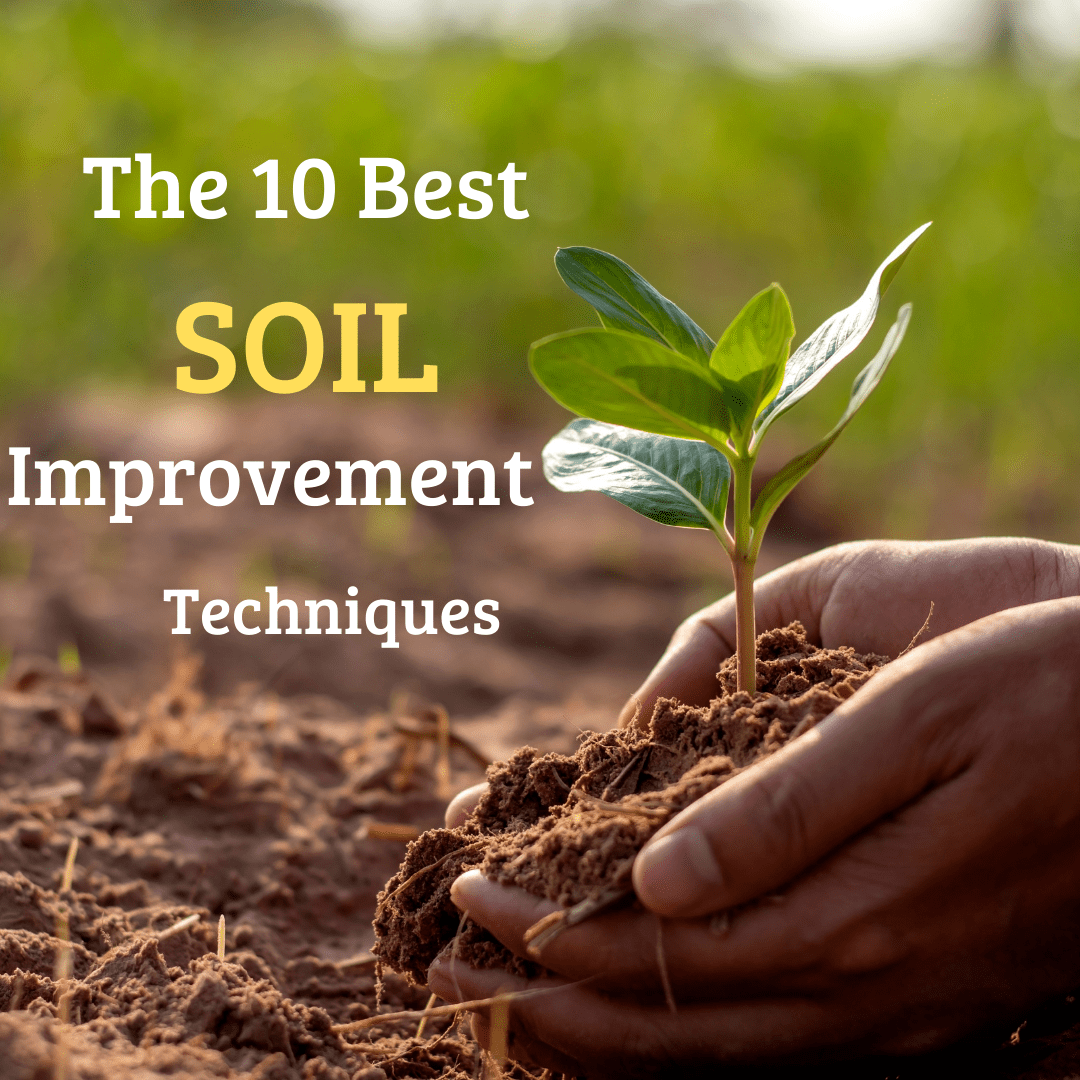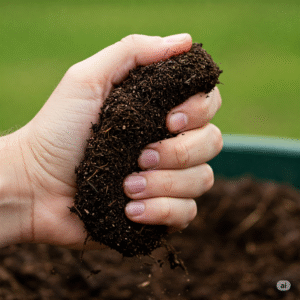Cultivating Success: The 10 Best Soil Improvement Techniques for Your Garden
Every gardener knows that great soil is the foundation of a thriving garden.
If your plants are struggling or your harvests are underwhelming, the issue likely starts beneath the surface. You’re not alone—many gardeners encounter the difficulty of low soil quality.
The good news? Your soil may become a nutrient-rich powerhouse with your help.
With the right techniques, even compacted, sandy, or nutrient-depleted soil can be revived and optimized for healthy plant growth.
In this post, you’ll discover the 10 best soil improvement techniques that actually work.
From composting and cover cropping to proper pH balancing and aeration, we’ll cover practical methods you can apply today to supercharge your garden’s success.
I. Understanding Soil Health
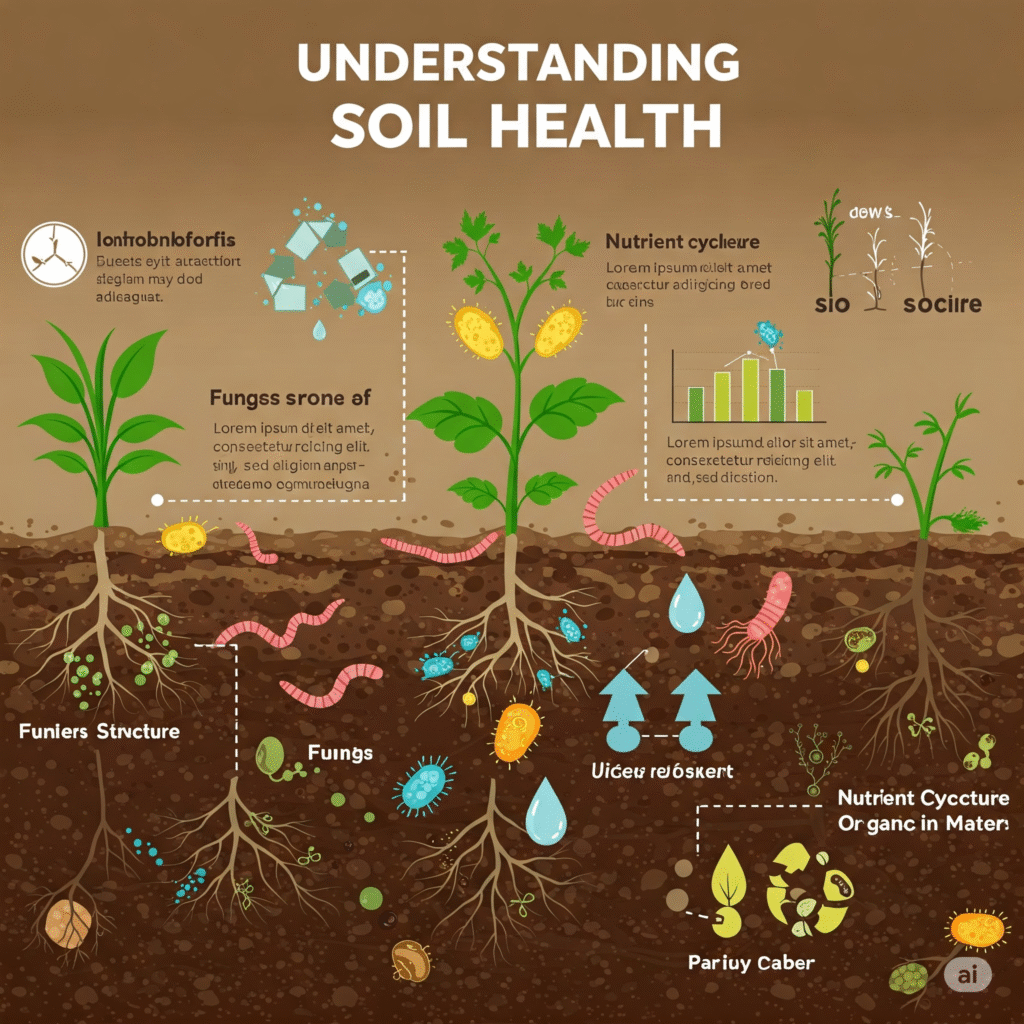
Table of Contents
A. The Importance of Soil Quality Improvement
In gardening, soil is more than simply dirt; it’s a living ecosystem.. Healthy soil supports plant growth in several key ways:
- Nutrient Supply: Good soil is packed with essential nutrients like nitrogen, phosphorus, and potassium, which plants need to thrive.
- Water Retention: Quality soil can hold moisture effectively, providing a steady water supply to plants.
- Microbial Activity: Beneficial microorganisms in healthy soil help decompose organic matter, making nutrients more accessible to plants.
B. Signs of Poor Soil
Recognizing the signs of poor soil improvement can save your plants from stress:
- Compacted Soil: If the soil is hard and compressed, it becomes difficult for roots to grow and absorb water.
- Drainage Issues: Water pooling or heavy flooding can indicate soil that doesn’t drain well, which can harm plant roots.
- Lack of Plant Growth: If plants struggle to grow or produce fruit, it might be a sign that something is off with the soil.
C. Testing Soil Health
Testing your soil improvement regularly can guide your improvement efforts:
- Soil Testing Kits: These convenient kits can reveal nutrient levels and pH balance, giving you a clear picture of your soil’s health.
- DIY Testing Methods: Simple techniques, like the jar test for soil texture, can help assess your soil’s composition at home.
- Understanding Soil pH and Nutrient Levels: Learning how to read the results can help tailor your amendments for optimal growth.
II. Organic Matter: The Foundation of Healthy Soil
A. Benefits of Adding Organic Matter
Incorporating organic matter into your soil is like giving it a nutritious meal:
- Enhanced Nutrient Content: Organic matter adds valuable nutrients to the soil as it breaks down.
- Improved Soil Structure: It helps create spaces within the soil, allowing roots to grow better and improving aeration.
- Increased Water Holding Capacity: Organic matter acts like a sponge, retaining moisture for plant use.
B. Sources of Organic Matter
There are several easy ways to add organic matter to your soil improvement:
- Compost: One of the most popular choices, compost is made from kitchen scraps and yard waste, turning trash into treasure.
- Manure: Well-rotted animal manure provides essential nutrients and soil improvement structure.
- Leaf Mold: Decomposed leaves enrich the soil, offering nutrients and improving its texture.
C. Applying Organic Matter
How you add organic matter can impact for soil improvement:
- How to Incorporate into Soil: Spread organic matter over the soil surface and mix it in lightly using a rake or tiller.
- Best Practices for Application: Aim to apply it in the fall or spring, allowing it time to break down and benefit your plants.
- Timing for Maximum Benefit: Preparing your soil before planting allows you to get the most out of the organic matter you add.
III. Cover Crops: A Natural Soil Enhancer
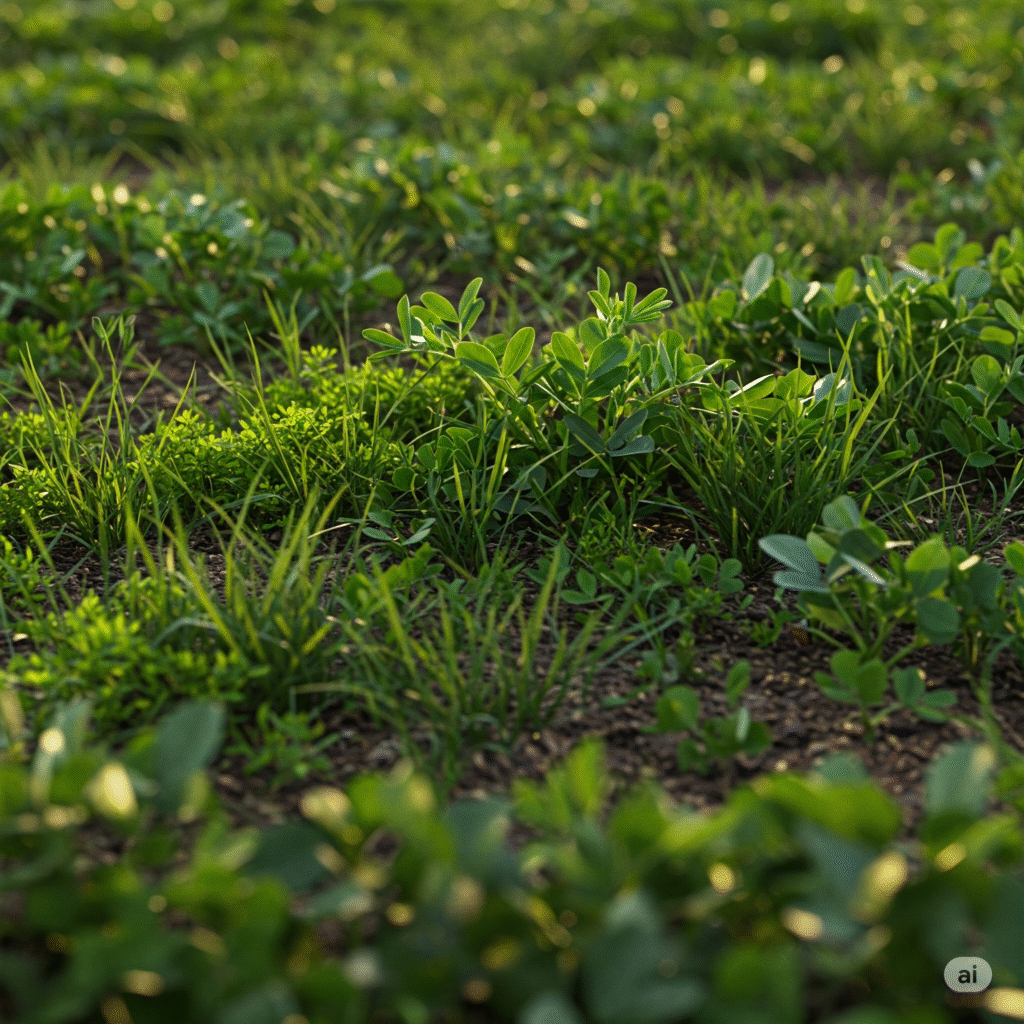
A. What Are Cover Crops?
The main purpose of cover crops is to soil improvement rather than to be harvested:
- Definition and Purpose: These crops help improve soil health by preventing erosion, adding nutrients, and enhancing microbial activity.
- Types of Cover Crops: Common options include clover, vetch, and ryegrass, each offering various benefits.
- Benefits Beyond Soil Improvement: They can help reduce weeds and offer habitat for beneficial insects.
B. Selecting the Right Cover Crop
Your particular garden demands will determine which cover crop is best for you:
- Climate Considerations: Some crops thrive in certain climates; research what works best in your area.
- Soil Type Considerations: Adjust your choice based on whether your soil improvement is sandy, clayey, or loamy.
- Desired Benefits: Consider whether you want to fix nitrogen, prevent erosion, or enhance soil structure.
C. Managing Cover Crops
Proper management ensures that cover crops provide maximum benefits:
- Planting Techniques: Sow seeds in rows or broadcast them over the area; follow the recommended seeding rates.
- Termination Methods: Cut or till cover crops before they flower to return nutrients to the soil without letting them go to seed.
- Timing and Maintenance: Monitor growth and manage cover crops throughout their life cycle for the best results.
IV. Mulching: Protecting and Enriching Soil Improvement
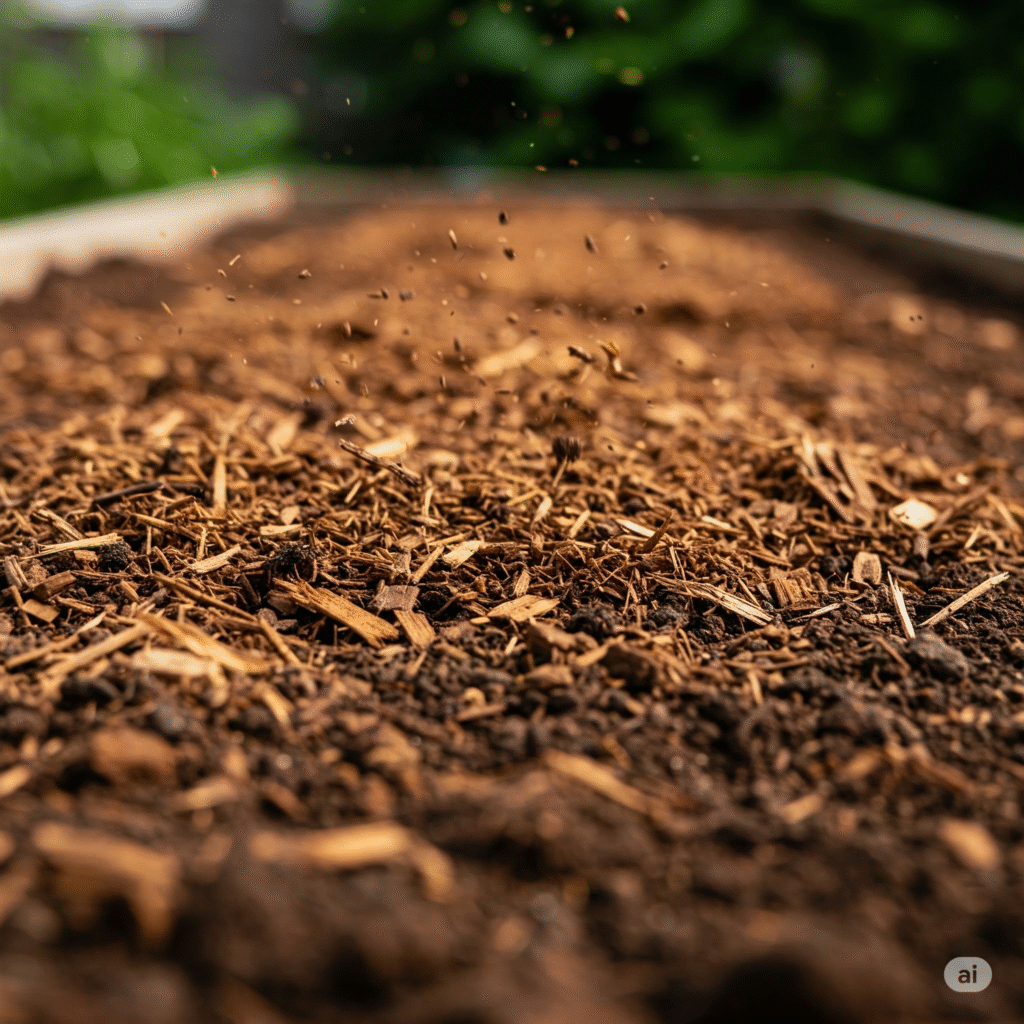
A. The Role of Mulch in Garden Health
Mulch serves multiple purposes in a garden:
- Moisture Retention: By keeping the soil wet, a thick layer of mulch lessens the need for regular watering.
- Weed Suppression: It acts as a barrier that inhibits weed growth, allowing your plants to thrive without competition.
- Temperature Regulation: Mulch shields plant roots from heat and cold by assisting in the maintenance of constant soil temperatures.
B. Types of Mulch
When it comes to mulch, there are several options:
- Organic Mulch (Wood Chips, Straw): These materials break down over time, adding nutrients to the soil while improving structure.
- Inorganic Mulch (Stone, Fabric): While they don’t contribute organic matter, they can be effective at controlling weeds and retaining moisture.
- Choosing the Right Mulch for Your Soil Improvement: Match your mulch type to your plants’ needs and the aesthetic you desire.
C. Applying Mulch Correctly
Correct application maximizes the benefits of mulch:
- How Much to Apply: A 2- to 4-inch layer is generally ideal, thick enough to suppress weeds but not so thick that it smothers plants.
- When to Apply: Mulch can be applied at the beginning of the growing season or after plants are established in your garden.
- Maintenance Tips for Mulched Areas: Keep an eye on your mulch layer; replenish as needed and make sure it doesn’t pancake, which can trap moisture and pests.
V. Natural Amendments: Boosting Soil Improvement Fertility

A. Common Natural Amendments
Natural amendments can give your soil a nutrient boost:
- Bone Meal: A source of phosphorus, it supports root development and flowering.
- Blood Meal: Rich in nitrogen, it helps promote lush green growth and vigorous plants.
- Gypsum: This helps soil smprovement structure and drainage while providing calcium and sulfur.
B. How to Use Natural Amendments
Application method matters when using natural amendments:
- Application Methods: Generally, mix amendments into the soil when preparing the garden beds or top-dress when needed.
- Timing for Application: Spring is often the best time to apply amendments before planting or during the growing season as needed.
- Understanding Soil Needs: Know your soil’s deficiencies by testing; targeted amendments work best.
C. Avoiding Over-Amendment
Getting the right balance is key:
- Signs of Excess Nutrients: Look for signs of nutrient burn on plant leaves, such as browning or wilting.
- Balancing Soil Amendments: Follow recommended guidelines and adjust based on soil tests.
- Testing Soil Before Amendments: Regular testing helps ensure that you are not adding too much of any one nutrient.
VI. Rotational Planting: Enhancing Soil Diversity
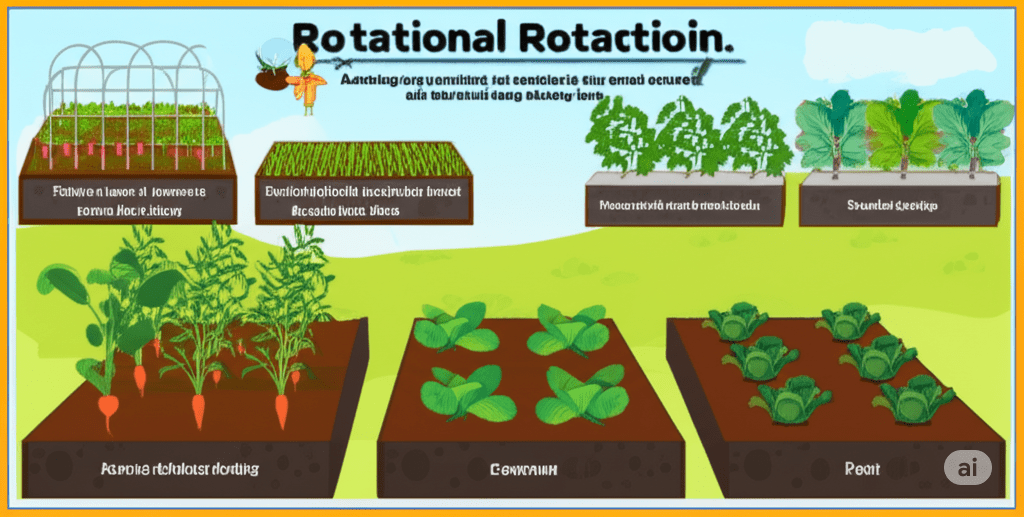
A. The Concept of Crop Rotation
Crop rotation involves alternating different crops in the same area each growing season:
- Definition and Benefits: It helps prevent nutrient depletion and reduces pest and disease build-up.
- History and Traditional Practices: Farmers have used crop rotation for centuries to maintain soil health and productivity.
- Influence on Soil Health: Different plants have varying nutrient needs and root structures, which can enhance soil diversity.
B. Planning Your Crop Rotation
A little planning goes a long way in crop rotation and soil improvement:
- Simple Rotation Plans: Start with a basic system, such as rotating legumes, leafy greens, and root vegetables.
- Understanding Plant Families: Group related plants together to prevent disease and utilize nutrient needs effectively.
- Timing and Sequence: Rotate crops based on their growth cycle and how much nutrient they utilize.
C. Implementing Rotation in Your Garden
Make crop rotation work in your favor:
- Techniques for Effective Rotation: Document your planting each season and plan for the following year.
- Monitoring Soil Health Between Cycles: Keep an eye out for changes in yield or pest problems, adjusting your plans as necessary.
- Long-term Benefits for Soil Dynamics: Over time, this practice builds healthier soil, leading to more productive gardens.
VII. Tillage: Managing Soil Structure
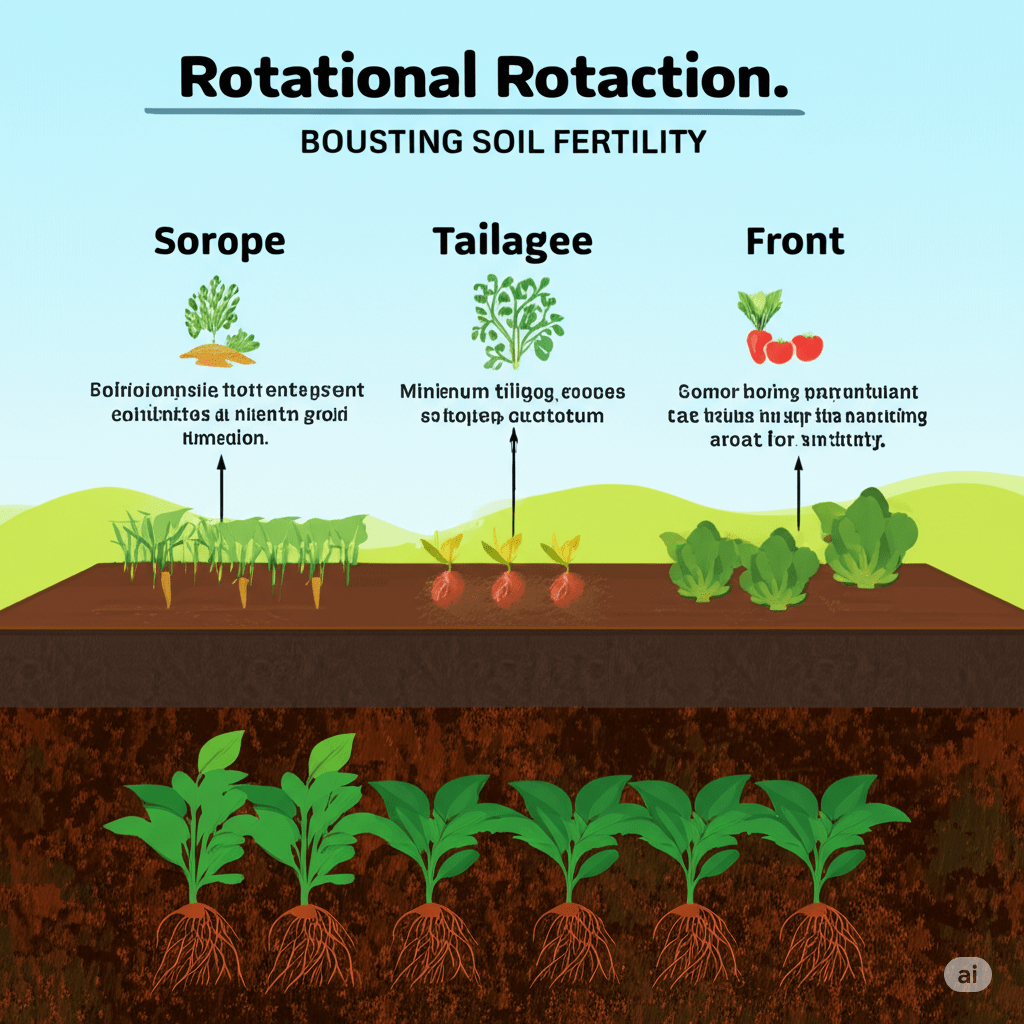
A. Pros and Cons of Tillage
Tillage has its benefits and drawbacks:
- Benefits for Soil Aeration: Proper tillage can help loosen compacted soil improvement.
- Risks of Soil Erosion: Excessive tilling can increase erosion, leading to nutrient loss and poor soil structure.
- Impact on Microbial Ecosystems: Tilling can disturb beneficial microbes, impacting overall soil health.
B. Techniques for Responsible Tillage
If tillage is necessary, do it wisely:
- No-Till Practices: These methods aim to disturb the soil Soil Improvement as little as possible, preserving its structure and microbial communities.
- Minimum Tillage: If you must till, limit it to essential areas, like row spacing, to keep the soil intact.
- Timing and Frequency of Tillage: Tilling when the soil is dry can prevent compaction and better preserve soil structure.
C. Alternatives to Traditional Tillage
Consider gentler methods of soil management:
- Raised Beds: Building raised beds can reduce the need for tillage while improving drainage and soil health.
- Soil Aeration Methods: Use tools like broadforks to aerate soil without traditional tillage.
- Using Plant Roots for Soil Structure: Deep-rooted plants can help break up the soil, enhancing its structure naturally.
VIII. Water Management: The Importance of Proper Hydration
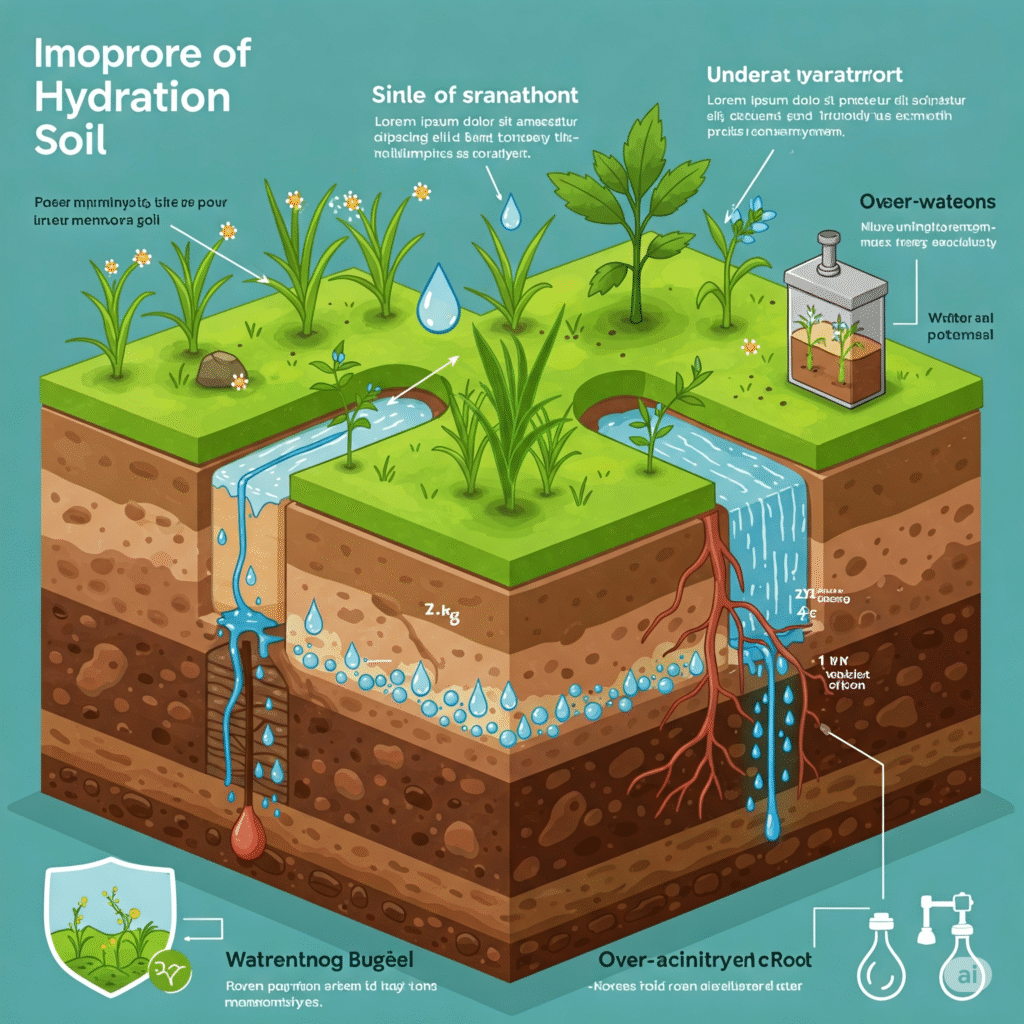
A. Understanding Soil Moisture Levels
Proper water management is crucial for healthy soil:
- Factors Affecting Soil Moisture: Soil type, weather, and plant uptake all play a role in moisture availability.
- Signs of Over or Underwatering: Wilting, yellowing leaves, or waterlogged soil can indicate improper moisture levels.
- Testing Soil Moisture: Use simple tools, like moisture meters, or the finger test to assess moisture before watering.
B. Irrigation Techniques for Soil Health
Effective irrigation can promote soil health:
- Drip irrigation systems:reduce waste and encourage deeper root growth by delivering water straight to the roots.
- Using Soaker Hoses: Soaker hoses are an easy way to maintain moisture levels in your garden while preventing fungal diseases.
- Rainwater Harvesting: Collecting rainwater can conserve resources while providing plants with a natural source of water.
C. Improving Drainage and Retention
Balancing water retention and drainage is key:
- Amending Soil with Sand and Organic Matter: These additions can help improve drainage in heavy soils.
- Creating Swales and Contours: Designing your garden layout to encourage natural water flow can enhance moisture distribution.
- Installing French Drains: For areas prone to waterlogging, French drains can redirect excess moisture away from plant roots.
IX. The Role of Microorganisms in Soil Health
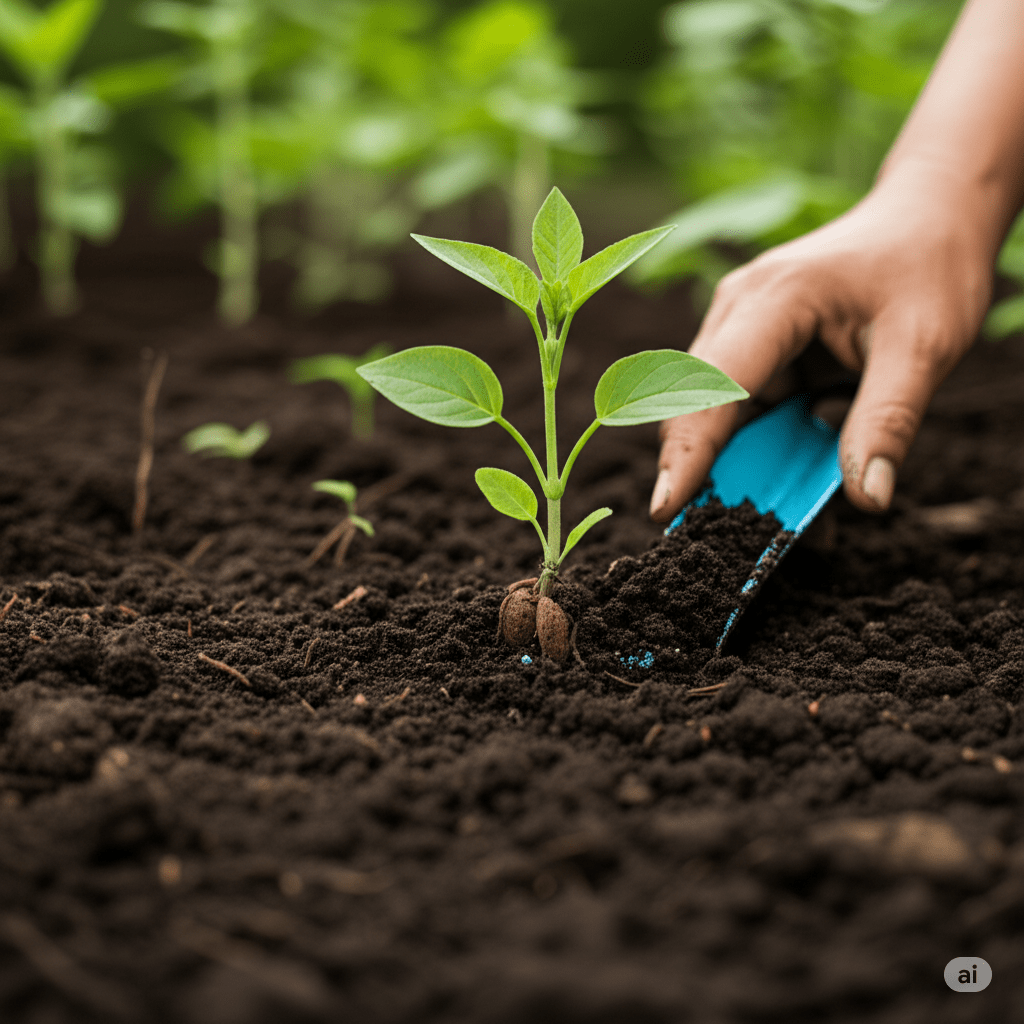
A. Beneficial Soil Microbes
Healthy soil is teeming with life:
- Types of Microorganisms: Plant health and nutrient cycling are facilitated by bacteria, fungus, and other soil organisms.
- Their Role in Nutrient Cycling: These microbes break down organic matter, releasing nutrients that plants can absorb.
- Enhancing Plant Growth: A rich microbial community promotes healthy root systems and better plant growth.
B. Encouraging Microbial Activity
You can foster beneficial microbes in your garden:
- Compost Teas: Diluting compost in water and using it as a liquid fertilizer can boost microbial activity.
- Biofertilizers: These products introduce beneficial microbes into the soil, enhancing nutrient availability.
- Maintaining Soil Moisture: Keeping soil consistently damp supports microbial health and prevents die-off.
C. Signs of a Healthy Microbial Community
Healthy soil has noticeable characteristics:
- Soil Aroma: A rich, earthy smell indicates active microbial life and healthy soil.
- Earthworm Activity: A thriving worm population is a good sign of healthy, well-aerated soil.
- Soil Structure: Crumbly, loose soil typically indicates healthy microbial activity and good overall soil health.
X. Regular Maintenance: Ensuring Long-Term Soil Health

A. Routine Soil Testing
Regular testing can help maintain soil health:
- Importance of Testing Schedule: Set a testing schedule to assess soil health at least annually, or more frequently if needed.
- Adjusting Amendments Based on Results: Use test results to fine-tune your soil amendments for optimal growth.
- Seasonal Testing and Observation: Keep an eye on changes throughout the seasons to adjust practices accordingly.
B. Continuous Learning and Adaptation
Stay informed about best practices for soil health:
- Keeping Up with Soil Practices: Read books, articles, and blogs about soil health and gardening techniques.
- Learning from Each Growing Season: Reflect on what worked and what didn’t to improve your gardening practices year after year.
- Joining Gardening Communities: Engaging with local groups can provide valuable insights and support in your gardening journey.
C. Record-Keeping for Soil Improvement
Track your gardening practices to see what works best:
- Tracking Amendments and Results: Maintain a log of amendments added and plant responses to build a solid reference.
- Documenting Plant Growth Outcomes: Keeping records of plant performance can help adapt techniques for maximum yield.
- Evaluating and Adjusting Practices Over Time: Regularly assess your approach and make changes based on what you’ve learned.
Conclusion
Incorporating these techniques into your gardening routine can dramatically improve your soil health, making for a more productive and flourishing garden. Remember, soil health is about balance; the key is to observe, adapt, and enjoy the journey of cultivating success.
FAQs
- What is the best way to improve soil quickly?
Adding organic matter, such as compost, can quickly boost soil health. - How often should I test my garden soil?
An annual test is a good practice, but you may need more frequent tests based on observed issues. - Can I mix different types of organic matter?
Yes! Mixing different organic materials can provide a wider range of nutrients. - Does soil amendment change with seasons?
Yes, seasonal changes can affect the types and amounts of amendments needed. - What are the signs of healthy soil?
Healthy soil supports diverse plant growth, retains moisture, has a pleasant earthy smell, and showcases active microbial life.

